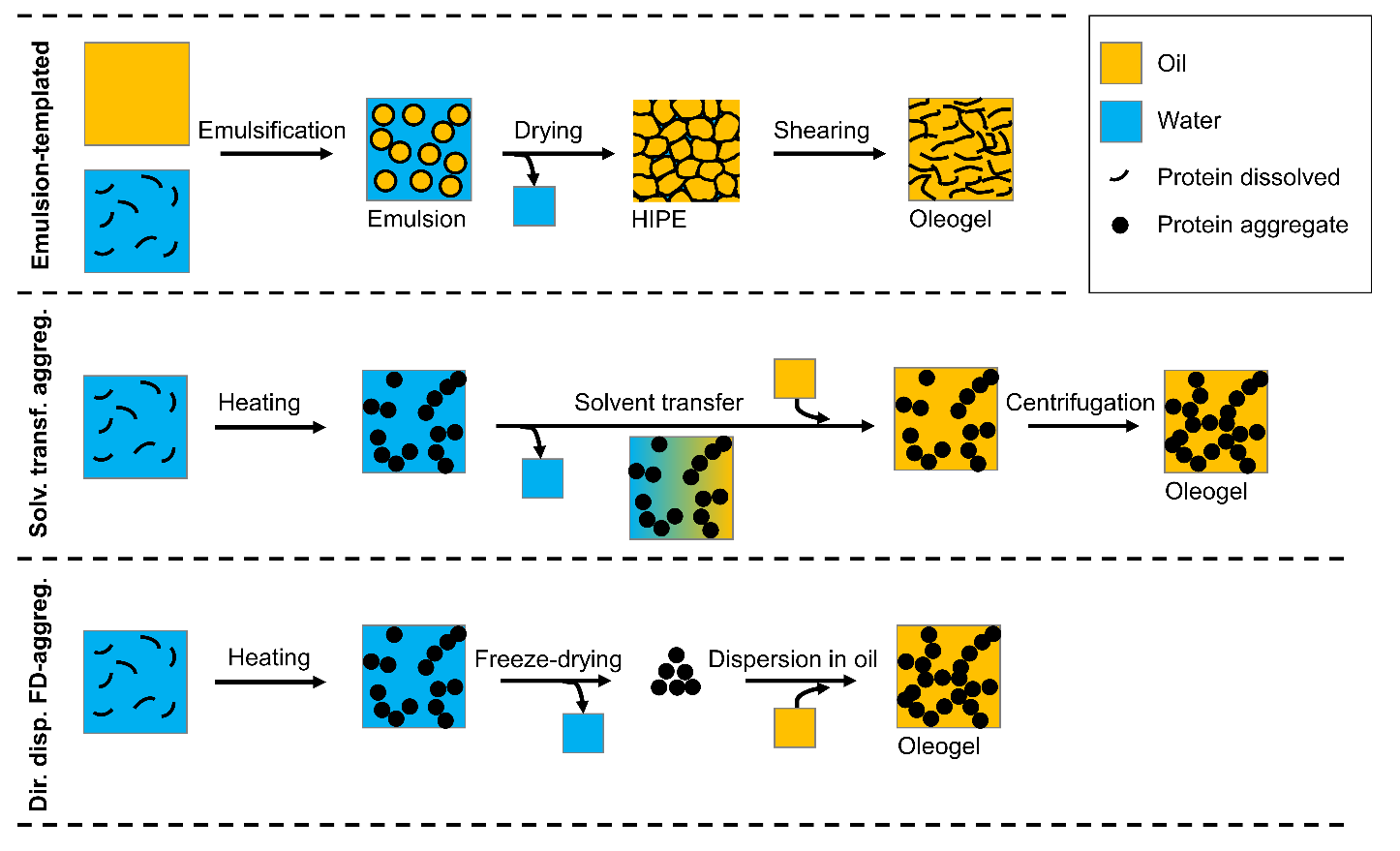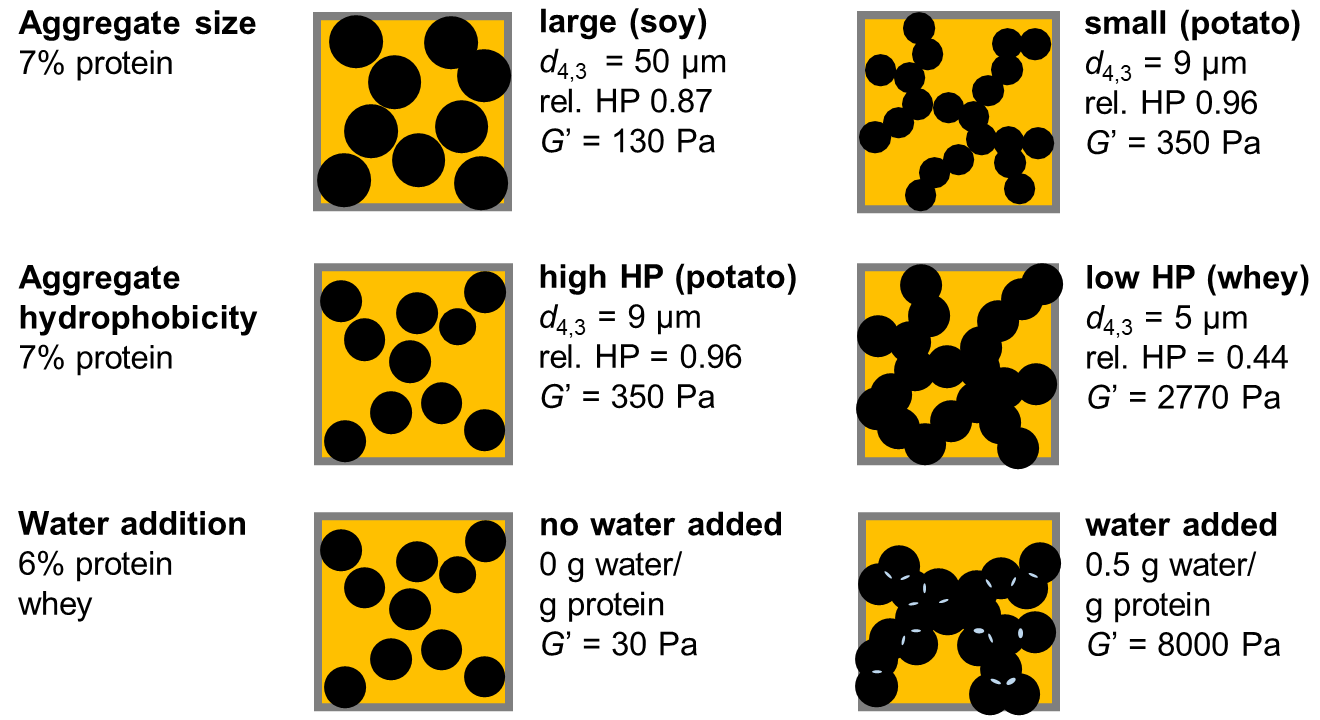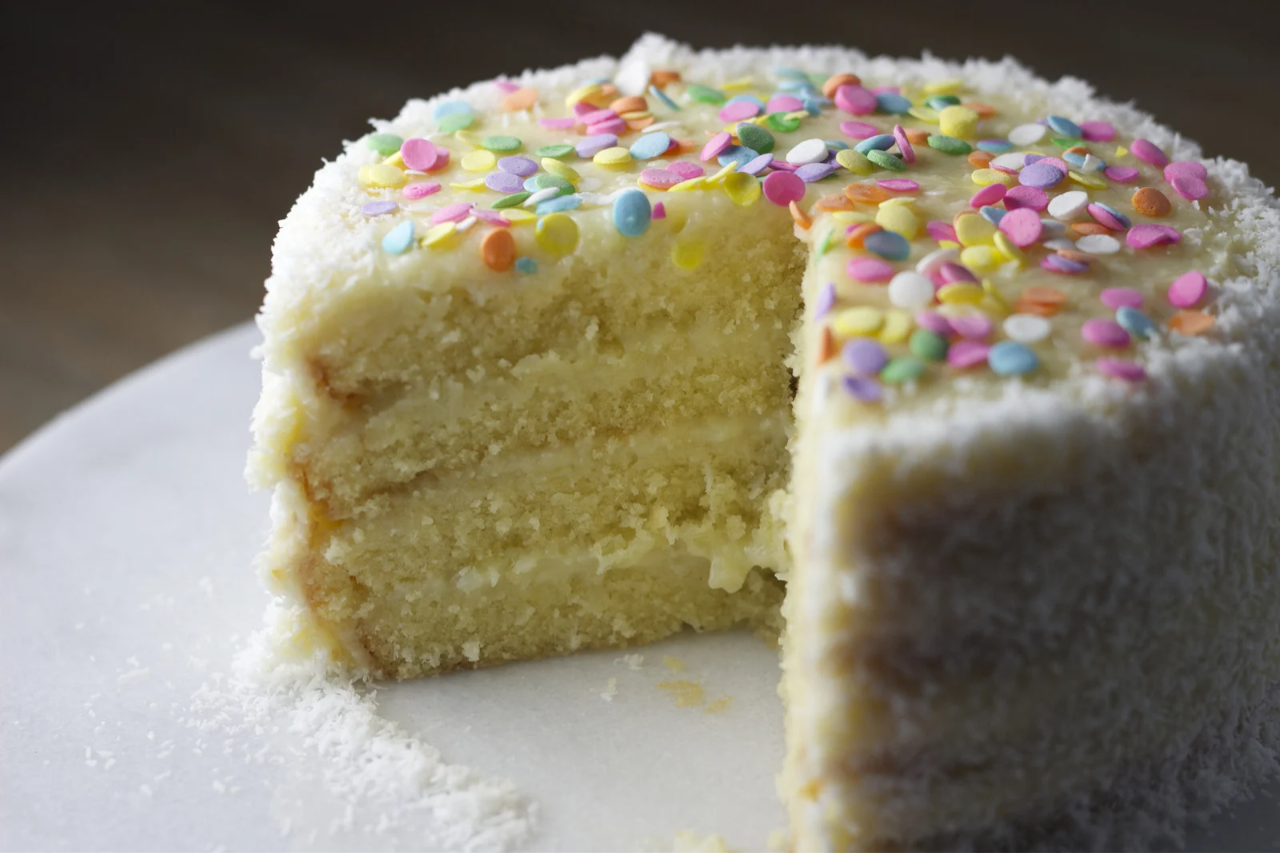Solid fats – why do we need alternatives?
Solid fats are an important functional component of many traditional food products like cake, cookies, chocolate, ice cream, bread and sausages, but they are also essential in novel products like meat replacers. The role of fats in such food products is not only to deliver flavour, but also to obtain the desired sensorial properties related to food texture, like creaminess, fluffiness or hardness (Vieira et al., 2015). The functional properties of fats are due to their solid character, which results from the formation of a network of solid triacylglyceride crystals (Sato & Ueno, 2014). Despite their functional advantages, awareness is increasing that consumption of solid fats has undesired effects on the environment and health. Whereas the production of animal-based fats like butter is inherently resource-intense (Sabaté & Soret, 2014), the use of alternative exotic plant-based fats, like palm fat, causes deforestation and loss of biodiversity (Meijaard et al., 2020). Regarding health, a decrease of the intake of saturated fatty acids and increase in unsaturated fatty acids has been recommended (Food and Agriculture Organization, 2010).
This article was written by Annika Feichtinger and Elke Scholten, Physics and Physical Chemistry of Foods, Wageningen University, Netherlands
The use of locally sourced and diverse vegetable oil types offers a solution to both problems: Negative effects on ecosystems are avoided (Anushree et al., 2017), and the intake of unsaturated fatty acids is increased, whereas saturated fatty acid intake is decreased. However, when used in their natural liquid state, oils are, for many products, unsuitable for the direct replacement of solid fats, as their untextured state is often detrimental for the sensory profile. Therefore, to replace solid fats with liquid vegetable oils, alternative approaches are needed to convert oils into materials with solid-like properties without changing their fatty acid composition.
Protein oleogels as solid fat replacers — what are they?
One approach to provide solid-like properties to liquid oils, whilst maintaining the oil’s natural fatty acid composition, is to structure them with the use of a structuring agent. The structuring agent forms a network in the oil phase, thereby immobilizing the oil; an oleogel is obtained. Different structuring agents have been investigated for this purpose, like waxes, cellulose derivatives, or, more recently, proteins (Feichtinger & Scholten, 2020; Singh et al., 2017). Proteins offer benefits over other potential structuring agents as they have a high nutritional value, a high consumer acceptance and are clean label. This places protein oleogels in a favourable position regarding their chances to become an established and well-accepted food ingredient. As proteins from different sources can be used, including plant proteins (Feichtinger et al., 2022; Feichtinger & Scholten, 2020), flexibility according to local availability and sustainability needs is provided.
Protein oleogels have been prepared using different approaches (Feichtinger & Scholten, 2020). In all approaches, hydrophilic proteins are introduced into the hydrophobic oil in such a way that the protein is dispersed throughout the oil phase, thereby enabling the formation of a space-spanning network. The first and still frequently used method is the emulsion-templated approach, in which a protein-stabilized oil-in-water emulsion with a high volume fraction of oil is prepared. Upon evaporation of water by heating, a protein oleogel is obtained, in which dispersed oil droplets are immobilized by a continuous network of proteins (Romoscanu & Mezzenga, 2006).
An alternative method is a solvent transfer approach. First, protein aggregates are formed in water, followed by their stepwise transfer to oil via an intermediate solvent, which is miscible in both water and oil. In such an approach, the protein aggregates form a space-spanning network as the dispersed phase, and oil is the continuous phase (de Vries, Wesseling, et al., 2017). As an alternative, less complex approach, also the direct dispersion of previously freeze-dried protein aggregates into oil is possible (de Vries, Lopez Gomez, et al., 2017; Wang et al., 2022). In Figure 1, the described approaches are illustrated schematically.

Figure 1: Schematic representation of the preparation of protein oleogels according to different approaches (adjusted from Feichtinger & Scholten, 2020)
Properties of protein oleogels — how can they be adjusted?
For oleogels created by network formation of protein aggregates as dispersed phase, as obtained via the solvent transfer approach, the gel properties can be adjusted by altering the strength of the interactions between the protein aggregates, i.e. the strength of the resulting protein network. Currently, three factors have been identified that have a major influence on network strength and therefore the final oleogel properties.
Aggregate size: The interaction between particles is related to the contact area between the particles. As smaller protein aggregates have a higher surface area, oleogels with smaller aggregates are stronger (Feichtinger et al., 2022).
Aggregate hydrophobicity: The hydrophobicity of the protein aggregates plays a role as it determines the balance of interactions of aggregates with other aggregates and the continuous oil phase. For more hydrophilic aggregates, interactions with the hydrophobic oil phase are less favourable, and interactions between aggregates themselves are preferred. These attractive particle-particle interactions are due to hydrogen bond formation, and lead to stronger networks (Feichtinger et al., 2022).
Presence of small amounts of water: Hydrophilic interactions between the dispersed protein aggregates can be enhanced by the addition of small amounts of water. The water forms small water bridges between the aggregates, also known as capillary bridges. These strong bridges lead to a greatly increased interaction strength between aggregates and therefore stronger oleogels. Depending on the amount of added water, the specific structure of the obtained network affects different rheological properties; stronger interactions lead to both a higher storage modulus (gel strength) and higher yield stress (de Vries et al., 2018; Wang et al., 2022).
A schematic illustration and examples regarding the influence of these factors on gel strength are provided in Figure 2. The size and hydrophobicity of protein aggregates can be varied by the use of different protein sources.

Figure 2: Schematic illustration and examples for changes in gel strength (storage modulus G’) at a specified protein concentration when varying aggregate size, aggregate hydrophobicity (reported as relative hydrophobicity HP on scale of 0-1, Feichtinger et al., 2022) or amount of added water (de Vries et al., 2018)
Protein oleogels in practice — ready to use?
The remaining major steps for the application of protein oleogels in food production are the development of suitable large-scale production procedures and the ability to control different rheological characteristics. Our understanding how interactions within the protein network can be varied provides a promising outlook both for identifying suitable production methods and for obtaining oleogels with a range of different properties. Protein oleogels have great potential in a variety of applications, such as bakery products and meat analogues, which require structured oils with suitable gel strength and yielding behaviour. Compared to traditional fats, protein oleogels do not melt upon heating, which offers the benefit that oil leakage from such products during preparation is prevented.
However, studies on applications of protein oleogels in food products are still limited. For protein oleogels based on pea protein, their ability to replace shortening in cake has been tested. The hardness and chewiness of the cakes containing oleogel were higher than for the reference cake prepared with shortening (Mohanan et al., 2020), showing that these oleogels do not provide the correct functionality yet. Nevertheless, in the case of whey protein oleogels as replacers of solid fats in sausages and cookies, textural properties have been shown to be similar (Scholten & de Vries, 2017). Therefore, though studies on the functionality of protein oleogels in food products are scarce and outcomes are mixed, these first results suggest that such protein oleogels have potential as a solid fat replacer in different food applications, once research in the field evolves further and the properties of oleogels can be controlled better.
References
Anushree, S., André, M., Guillaume, D., & Frédéric, F. (2017). Stearic sunflower oil as a sustainable and healthy alternative to palm oil. A review. Agronomy for Sustainable Development, 37 (3), 18. https://doi.org/10.1007/s13593-017-0426-x.
de Vries, A., Jansen, D., van der Linden, E., & Scholten, E. (2018). Tuning the rheological properties of protein-based oleogels by water addition and heat treatment. Food Hydrocolloids, 79, 100–109. https://doi.org/10.1016/j.foodhyd.2017.11.043.
de Vries, A., Lopez Gomez, Y., Jansen, B., van der Linden, E., & Scholten, E. (2017). Controlling Agglomeration of Protein Aggregates for Structure Formation in Liquid Oil: A Sticky Business. ACS Applied Materials & Interfaces, 9 (11), 10136–10147. https://doi.org/10.1021/acsami.7b00443.
de Vries, A., Wesseling, A., van der Linden, E., & Scholten, E. (2017). Protein oleogels from heat-set whey protein aggregates. Journal of Colloid and Interface Science, 486, 75–83. https://doi.org/10.1016/j.jcis.2016.09.043.
Feichtinger, A., Nibbelink, D. G., Poppe, S., Bozzo, L., Landman, J., & Scholten, E. (2022). Protein oleogels prepared by solvent transfer method with varying protein sources. Food Hydrocolloids, 132, 107821. https://doi.org/10.1016/j.foodhyd.2022.107821.
Feichtinger, A., & Scholten, E. (2020). Preparation of Protein Oleogels: Effect on Structure and Functionality. Foods, 9 (12), 1745. https://doi.org/10.3390/foods9121745.
Food and Agriculture Organization of the United Nations. (2010). Fats and fatty acids in human nutrition. Report of an expert consultation, 10-14 November 2008, Geneva.
Meijaard, E., Brooks, T. M., Carlson, K. M., Slade, E. M., Garcia-Ulloa, J., Gaveau, D. L. A., Lee, J. S. H., Santika, T., Juffe-Bignoli, D., Struebig, M. J., Wich, S. A., Ancrenaz, M., Koh, L. P., Zamira, N., Abrams, J. F., Prins, H. H. T., Sendashonga, C. N., Murdiyarso, D., Furumo, P. R., … Sheil, D. (2020). The environmental impacts of palm oil in context. Nature Plants, 6 (12), 1418–1426. https://doi.org/10.1038/s41477-020-00813-w.
Mohanan, A., Tang, Y. R., Nickerson, M. T., & Ghosh, S. (2020). Oleogelation using pulse protein-stabilized foams and their potential as a baking ingredient. RSC Advances, 10 (25), 14892–14905. https://doi.org/10.1039/c9ra07614j.
Romoscanu, A. I., & Mezzenga, R. (2006). Emulsion-templated fully reversible protein-in-oil gels. Langmuir, 22 (18), 7812–7818. https://doi.org/https://doi.org/10.1021/la060878p.
Sabaté, J., & Soret, S. (2014). Sustainability of plant-based diets: Back to the future. American Journal of Clinical Nutrition, 100 (SUPPL. 1), 476–482. https://doi.org/10.3945/ajcn.113.071522.
Sato, K., & Ueno, S. (2014). Physical properties of fats in food. In Fats in Food Technology: Second Edition (Vol. 9781405195423, pp. 1–38). Wiley Blackwell. https://doi.org/10.1002/9781118788745.ch1.
Scholten, E., & de Vries, A. (2017). CHAPTER 8. Proteins as Building Blocks for Oil Structuring. In Edible Oil Structuring (pp. 150–174). pubs.rsc.org. https://doi.org/10.1039/9781788010184-00150.
Singh, A., Auzanneau, F.-I., & Rogers, M. A. (2017). Advances in edible oleogel technologies – A decade in review. Food Research International, 97, 307–317. https://doi.org/10.1016/j.foodres.2017.04.022.
Vieira, S. A., McClements, D. J., & Decker, E. A. (2015). Challenges of Utilizing Healthy Fats in Foods. Advances in Nutrition, 6 (3), 309S-317S. https://doi.org/10.3945/an.114.006965.
Wang, G. S., Chen, H. Y., Wang, L. J., Zou, Y., Wan, Z. L., & Yang, X. Q. (2022). Formation of protein oleogels via capillary attraction of engineered protein particles. Food Hydrocolloids, 133. https://doi.org/10.1016/j.foodhyd.2022.107912.
Researching protein oleogels
The preparation and functionality of protein oleogels is an exciting new area of research. Since we first indexed content on this topic in the FSTA database in 2018, 96 documents have been indexed focusing on protein oleogels. 25 of these have already been published so far in 2023, so the volume of published research is anticipated to keep growing! These 96 records are sourced from 31 journals published by 13 organisations based in 9 countries, as well books and theses.
Research is coming from a range of institutions based in 20 countries; the top 5 in terms of research output being China, USA, Iran, India, Brazil, and The Netherlands.


